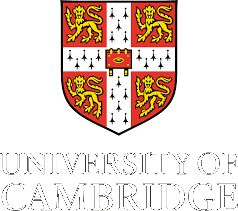Moliant i Ddewi (Dafydd Llwyd Mathafarn)
edited by Eurig Salisbury
Introduction
This poem to St David by Dafydd Llwyd of Mathafarn is one of only two known vaticinatory awdlau, the other being a poem to Jasper Tudor by Lewys Glyn Cothi (GLGC poem 12). Other awdlau by Lewys Glyn Cothi contain vaticinatory themes (ibid. 14.69–72, 15.28–48, 69–76; another poem by Hywel or Bedo Aerddren, known as ‘The Patrick Ode’ and described as a vaticinatory awdl in Jones 1917–18: 30, is in fact a poem of praise). There are no other awdlau by Dafydd Llwyd, nor are there any other examples of the unique form of the cywydd llosgyrnog metre used in this poem (see the section below on metre and cynghanedd).
The poem begins by addressing St David and recounting some of his miracles (ll. 1–34). The content relates to miracles performed both before and after his birth and is broadly similar to the Latin and Welsh lives, but a few interesting details suggest that Dafydd Llwyd may have been drawing upon other sources that perhaps derived ultimately from the Welsh life (ll. 5n, 10n, 23–6n, 27–30n). This part of the poem, roughly the first third, is more or less an individual poem in its own right. In the second part, the poet implores the saint to save the Welsh people from rhyw adfyd maith ‘some great affliction’ that is imminent (35–98). As discussed below in the section on metre and cynghanedd, this two-part structure is made more evident by Dafydd Llwyd’s use of cyrch-gymeriad.
Dafydd Llwyd often evoked St David in a vaticinatory context, but never to the same extent as in this poem (GDLl 22.3, 24.63, 35.45, 42.52, 43.37), sometimes reflecting the belief that David was an author of prophecy (ibid. 4.3, 12.45, 15.18, 34.65; three poems are attributed to ‘Dewi Sant’ in MCF). The association is reminiscent of the importance given to David in the famous tenth-century vaticinatory poem, ‘Armes Prydain’ (Arm P ll. 51, 129, 140, 196).
As well as being a poem of praise for a saint, this awdl is also a highly effective piece of political propaganda. Its context lies in the turbulent events of the second half of the fifteenth century before 1485, when Henry Tudor vanquished Richard III and won the crown at the battle of Bosworth. Walter Davies (Gwallter Mechain) described his copy of the poem in manuscript LlGC 1641B (1793) as gweddi er gwared Cymry yn eu hadfyd ac i frudiaw gwaith Fosworth ‘a prayer to save the Welsh people in their hour of need and to foretell the battle of Bosworth’. These may have been Walter Davies’s own words, but it is also possible that he copied the information from his source, a lost manuscript once owned by William Maurice of Llansilin (1619/20–1680). There is nothing in the poem itself, however, that explicitly links it with Henry Tudor’s campaign in 1485. Minor vaticinatory signs have the potential to become highly significant in the light of what happened in August 1485, drawing into the campaign’s orbit a large number of poems that may belong to an earlier period. For example, y wadd ‘the mole’ (ll. 51n, 79) may signify Richard III, but could also be a common vaticinatory reference to the enemy. The reference to Aberdaugleddau (l. 76n) may suggest that Dafydd Llwyd knew that Henry Tudor’s intention was to land at Milford Haven in August 1485, but it may also be simply a rhetorical commonplace. The references to eleni ‘this year’ (ll. 92, 95) may carry more significance, but they should be understood in line with other similar references to the immanency of events in the work of Dafydd Llwyd (GDLl 8.63, 11.6, 19.44, 36.29). The same is true of the seemingly significant reference to cyn diwedd mis Medi ‘before the end of September’ (l. 96n).
What sets this poem apart from many other vaticinatory poems, and may well point to it being associated with the campaign of 1485, is its intensity of feeling from line 35 onwards. Williams (1986: 26) argued that Dafydd Llwyd composed the poem shortly before Henry Tudor landed at Milford Haven, calling it ‘a majestic ode to Saint David, subtly evocative of the atmosphere that prevailed in Wales, one compounded of a mixture of hope and apprehension’. This is indeed the most likely interpretation, given that the poem’s likely raison d’etre was to drum up support for Henry Tudor, rather than any other proclaimed son of prophecy in this period (such as Henry’s uncle, Jasper Tudor). The rhythmic beat of the cywydd llosgyrnog metre certainly charges the awdl with a dramatic processional immediacy not often found in vaticinatory verse.
Further on the vaticinatory poetry of the fifteenth century, see Lewis 1923; HSt 149–63; Evans 1953; Jones 1979; Williams 1979: 71–86; Evans 1997; GDGor; LlU 346–74.
In May 2009 the second half of this poem (GDLl edition) was performed by Twm Morys and Datgeiniaeth as part of an AHRC funded Beyond Text project at Bangor University (see the seventh video from the top on the project website, Link).
Date
In all likelihood shortly before Henry Tudor landed in Pembrokeshire on 7 August 1485, but an earlier date is possible (see the discussion above).
Previous editions
GDLl poem 13; Jones 1917–18: 54–9.
Metre and cynghanedd
Awdl, 98 lines. Two englyn metres are used in the first part of the poem (ll. 1–34), namely seven englynion unodl union divided after the fourth englyn by a six line englyn proest dalgron cyfnewidiog (CD 324–7). The second part of the poem (35–98) is a series of twenty verses in the cywydd llosgyrnog metre and one englyn unodl union.
The cywydd llosgyrnog metre seems to have been used very rarely. It comprises a seven-syllable llosgwrn ‘tail’ preceded by two, three or four eight-syllable lines, the caesura in the last line rhyming with the previous lines and the end of the line maintaining the main rhyme (CD 330; cf. DE poem XXXIV; GHCLl XLVIII.49–54; GLMorg 22.32–4). However, the seemingly unique form of the metre used in this poem has an octosyllabic llosgwrn, which imbues each verse with a strong rhythmic quality. Furthermore, the cynghanedd in the fourth verse of cywydd llosgyrnog (44–6) follows a different pattern, and was accordingly placed on the page in a different way to the regular cywydd llosgyrnog verses in many manuscript copies. This verse is in fact a seemingly unique form of the rhupunt hir metre in the form of a verse of cywydd llosgyrnog, and reflects the changes made to the use of cynghanedd in the rhupunt metre in the eisteddfod held at Carmarthen in 1451 (CD 332–3; nonetheless, the form is less constricted than gorchest y beirdd, a similar metre devised by Dafydd ab Edmwnd, ibid. 350).
Unlike the vast majority of fifteenth-century awdlau, this awdl contains very few metrical embellishments (cf. GG.net poems 111 and 113, two awdlau composed around the same period). This may support the belief that the poem was composed shortly before Henry Tudor arrived in Wales in August 1485, and therefore at short notice. The first line of an englyn unodl union usually contained cynghanedd sain (CD 276; cf. its regular use in GG.net poem 43), but cynghanedd draws is used more often in this poem. Furthermore, it was customary for the rhagwant, namely the break between the two halves of the first line, to fall on the fifth syllable, but in this poem the rhagwant falls on the fourth syllable in two englynion unodl union (CD 275–7, 285–6; ll. 9n, 13 (textual)). There is no regular form of cymeriad, namely the linking of a series of lines by beginning each line with the same letter or word or by alliterating, and the englynion are not linked by rhyme. Cyrch-gymeriad – the repetition of the end of a previous verse at the beginning of the following verse – is used sparingly, namely in the first and last lines of the poem and also the last line of the first half and the first line of the second (35, 36), and at the end of the last verse of cywydd llosgyrnog and the beginning of the concluding englyn. Line 35 and the last line are linked by meaning as well as cyrch-gymeriad, which gives the impression that the second half of the poem is a separate unit (this perhaps explains why it was the only part of the poem recorded in manuscript Stowe 959; cf. Guto’r Glyn’s awdl in praise of abbot Rhys of Strata Florida, in which the second part is linked by cyrch-gymeriad, GG.net 8.45, 92). The cywydd llosgyrnog verses are all linked by the main rhyme -on.
The scarcity of conventional decoration in this awdl is perhaps countered by an unexpected embellishment in the first lines of two englynion unodl union. Lines 9 and 31 both contain seven- and eight-syllable cynganeddion traws respectively yet, in their entirety, both lines – the first line of cynghanedd and the words that follow the rhyme-word – form a consonantal cynghanedd. The correspondence is partly incomplete in line 9 Duw a’th ddonies ar y dydd – y’th aned, but the consonance between a’th ddonies and y’th aned is obviously intentional (the unanswered dd may have been ignored on purpose by virtue of its similarity to th). There is no irregularity in line 31 Cof ydiw yn ôl, cyfodi – yn wir, where the correspondence is complete (for another possible example, where cynghanedd lusg is used before the rhyme-word and cynghanedd draws across the line, see GDLl 87.1 Maneg, biog serchogfwyn – i minnau). There is no mention of this embellishment in CD, and no examples were found in the work of other poets of this period.
Cynghanedd: croes o gyswllt 1% (1 l.), croes 54.5% (48 ll.), traws 23% (20 ll.), sain 17% (15 ll.), llusg 4.5% (4 l.). These figures are calculated from a total of 88 lines, after omitting the second lines of the eight englynion unodl union, where consonantal correspondence is used between the words that follow the end-rhyme in the first line and the beginning of the second in every englyn except the second, where cynghanedd sain is used. The four cynganeddion croes in lines 44–5, which are an essential part of the rhupunt hir metre, are also omitted. Lines 30 and 84 are counted as cynganeddion sain, but the first could also be a cynghanedd groes o gyswllt and the second a cynghanedd groes. Lines 56 and 83 are counted as cynganeddion croes, but they could also be cynghaneddion sain.


